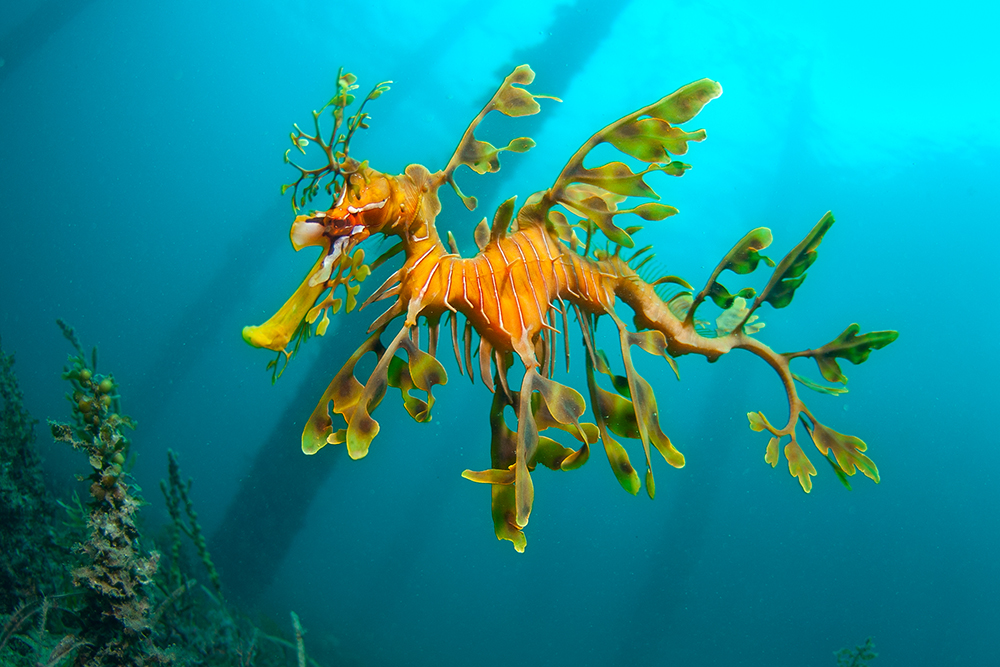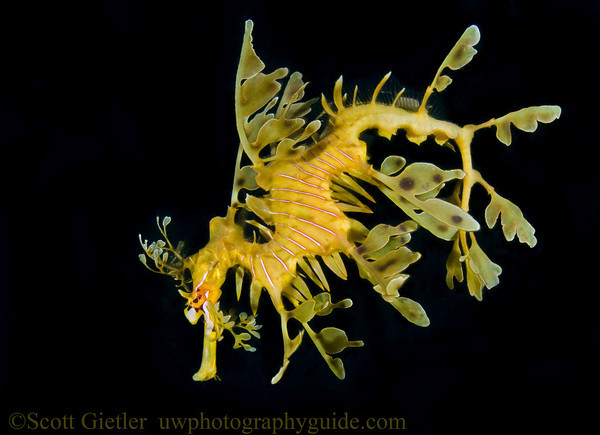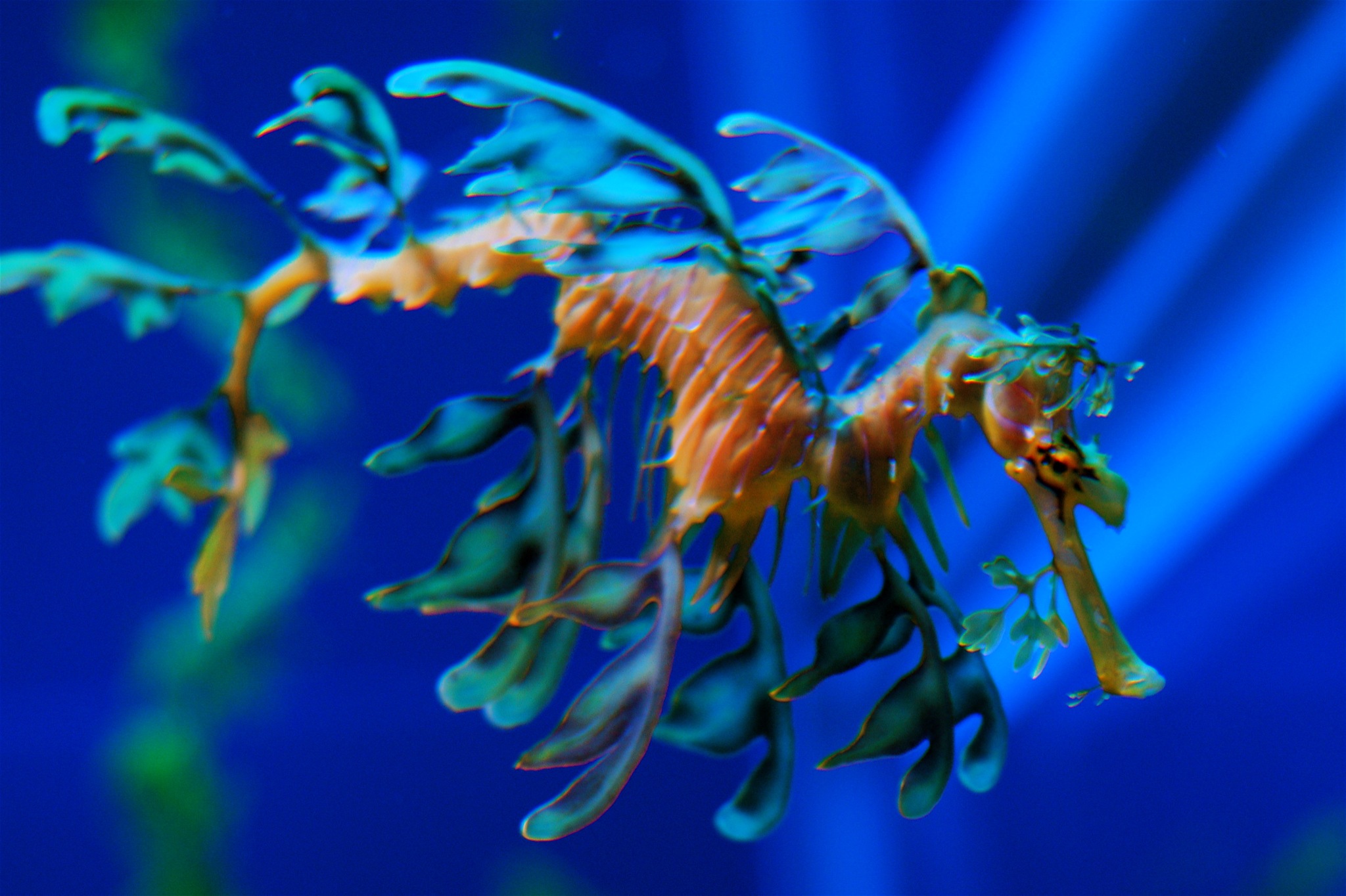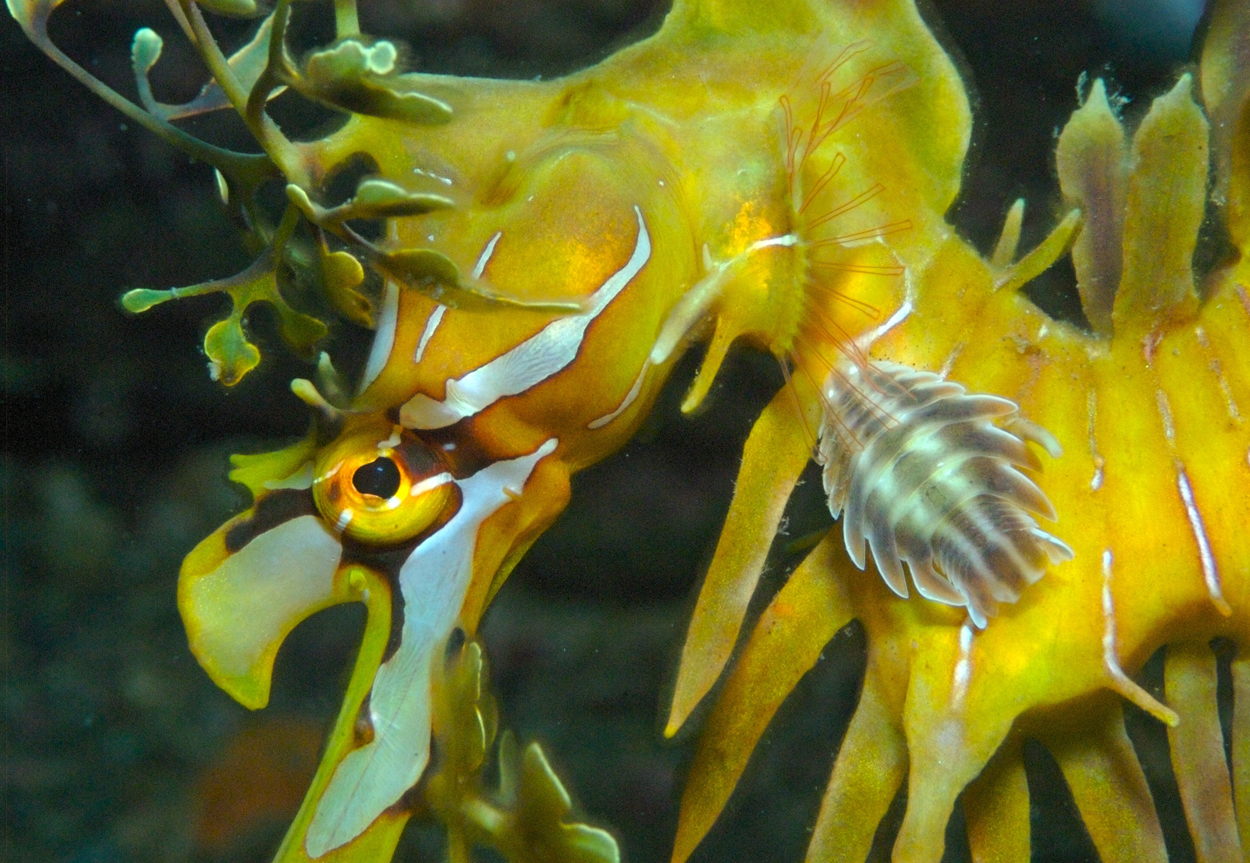
Phycodurus eques
FAMILY
Syngnathidae
TAXONOMY
Phyllopteryx eques Gьnther, 1865, South Australia.
OTHER COMMON NAMES
None known.
PHYSICAL CHARACTERISTICS
One of the most distinctive of all fishes, the leafy seadragon
has numerous, complex leaflike dermal projections from the
extremities of its head, trunk, and tail spines. Body is elongate,
slender but somewhat sinuous, and encased in ringlike bony
plates that extend as spines. The head is long, directed at almost
a right angle in relation to the body, with a frontal bony
projection and an extremely elongated snout. The mouth is
upturned and terminal. Eyes round. Dorsal fin, which is poseterior,
has 34–38 rays; pectoral fins have 19–21 rays; anal fin
has four rays. Tail slender and prehensile, with leaflike dorsal
projections. Pelvic and caudal fins, lateral line, and scales are
absent. Coloration is greenish brown or yellow, with vertical
stripes along the trunk. Head has slight mask and varying dark
blotches on leaflike projections. Specimens in deeper waters
(about 98 ft, or 30 m) tend to be more reddish. Reaches some
13.8 in (35 cm) in length.
DISTRIBUTION
Coastal regions of southern Australia from Western Australia
(below Perth) to southern Victoria.
HABITAT
A marine species inhabiting shallow (down to about 98 ft, or
30 m), temperate waters, usually sheltered among algae and
reefs but also found over sandy areas.
BEHAVIOR
A sluggish species, appearing to float aimlessly in kelp beds,
protected by its elaborate camouflage. It may move rhythmically
back and forth in a manner similar to algae being swept
by currents. Adults may congregate in shallow bays in late winter
to pair and mate. Divers can approach this species slowly.
Cleaner shrimp and clingfish have been observed to “clean”
parasites off leafy seadragons.
FEEDING ECOLOGY AND DIET
Feeds mostly on mysids and other crustaceans (e.g., shrimps
and squad-lobsters). Predators unknown but presumably larger
fishes.
REPRODUCTIVE BIOLOGY
Reproduction has been observed in the wild in this species.
(Aquarium-bred specimens take some two years to reach
adult size.) Females have greatly swollen trunks before
spawning. Males carry a brood containing an estimated
250–300 elliptical eggs underneath their tails, posterior to
the anal fins. The eggs, which measure 0.3 by 0.2 in (7 by 4
mm), are maintained in honeycomb-like egg pockets in the
abdominal skin of the males. Pregnant males usually are seen
in November or December. The tail of the male becomes
swollen and turns bright yellow to indicate readiness to
mate, at which time sperm are released into the abdominal
region. The courtship ritual is similar to that of some
pipefishes (in which the abdominal area is displayed to the
mate, while the head is maintained in an upright position).
The female deposits her eggs onto the abdominal region of
the male, pushing them into place. At that point, egg pockets
form on the male to fasten the eggs securely in place. Incubation
takes about eight weeks. Males deposit hatchlings in a
wide area, as hatching takes about one week. Hatchlings are
advanced and settle on the bottom (at about 1.4 in, or 35
mm, in length), sometimes remaining in small groups and
venturing into shallower water.
CONSERVATION STATUS
Listed as Data Deficient by the IUCN.
SIGNIFICANCE TO HUMANS
An aquarium species that also attracts numerous recreational
divers who want to see it up close (e.g., in Victoria Harbor,
South Australia). This species cannot be collected off South
Australia legally. It is somewhat difficult to maintain in
aquaria, owing to its specialized feeding requirements,
but aquarium-raised specimens may live for more than 10
years in captivity. Many aquarium specimens are bred in
captivity.
Photo Gallery of - Leafy seadragon





 Animalia Life
Animalia Life